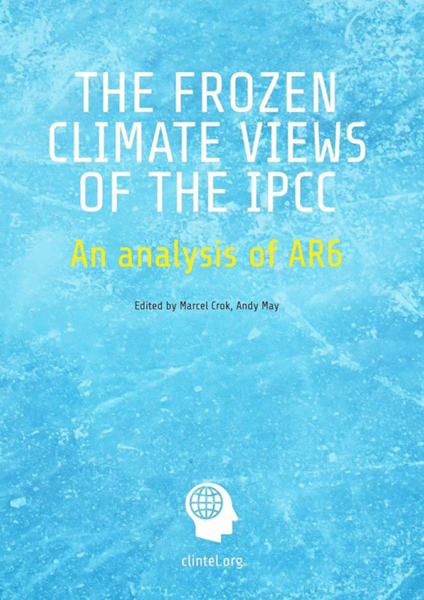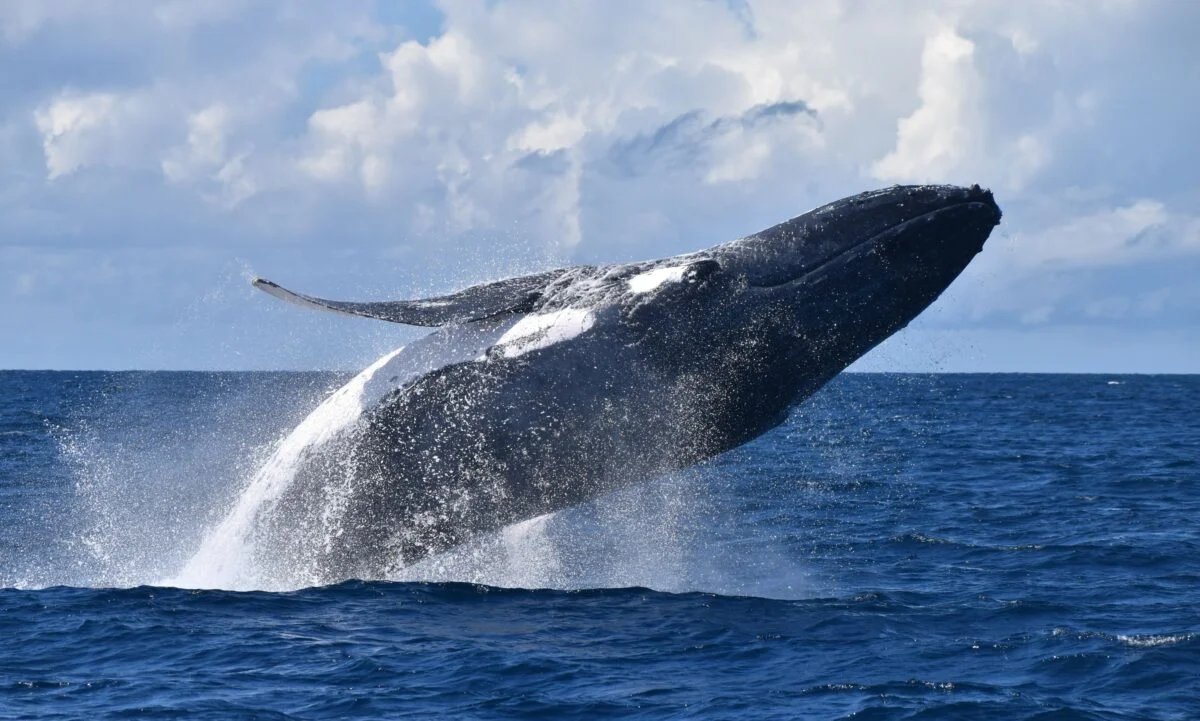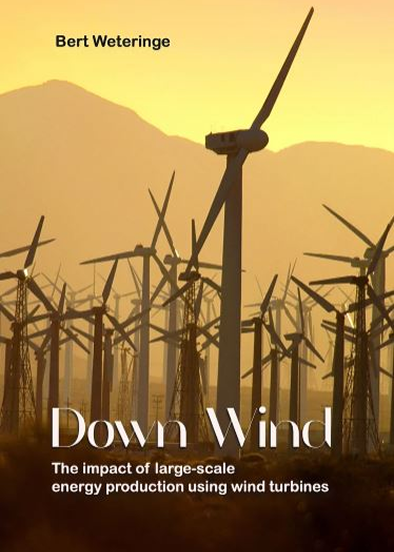Wind turbines in the sea and whales
In our recent report The Wind Turbine Tragedy Clintel pointed out the health dangers for humans of infrasound (vibrations we cannot hear) produced by wind turbines. In the following article guest author and biophysicist dr. Dietmar Hildebrand writes about the effects of wind turbines on whales. For the effects on humans also see this earlier article by Hildebrand.
The Song of Whales
In the ‘nature’ section of my CD shelf, there is a CD from 1991 called Songs of the Humpback Whale. There is silence in the background. A touching song can be heard in the silence. You can find examples of whale songs on YouTube today e.g. https://www.youtube.com/watch?v=sjkxUA041nM is the song on my CD. https://www.youtube.com/watch?v=5tRMqbPH_pk is also interesting, because the image shows the frequency distribution of the song. Unfortunately, the infrasound range is hardly visible. There are people who use whale songs as lullabies. They sound relaxing and calming. Today we know that this ‘song’ is the language of humpback whales, which they use to communicate across hundreds of kilometers of ocean. Since 2014 we have known that whales can regulate the sensitivity of their ears to perform this acoustic miracle. However, many details about the acoustic abilities of whales only became known to a wider audience through the Future Science Brief No. 7 of October 2017 (1).
Annoying noises in the water
Now imagine a particularly annoying noise. For me it would be the noise of the circular saw in my basement workshop. Now imagine that the annoying source of noise is on all day and all night for the rest of your life and you have no way of turning it off.
So now you know how the whales that live in the wide vicinity of offshore wind farms are doing. The word ‘park’ in it is a psychological trick, because you unconsciously think of birdsong and rustling leaves, but not of circular saws.
The wind turbines rotate above the water, so how does infrasound and LFN (low frequency noise) get into the water? Well, if you live in an apartment and someone else drills a hole in the wall, you will hear it throughout the house. The sound is not transmitted through the air, but the walls and floors of the house transmit sound and vibrations. It is the same with wind turbines. The mast and concrete base bring the vibrations of the rotor blades, but also the generators, into the water. Couldn’t they have installed sound-absorbing rubber buffers? That helps a little with small, annoying noise sources like heat pumps, but with wind turbines weighing tons, you’d have to do some research and experimentation. Did they? Of course NOT .
Who cares about the flora and fauna of the sea when you can make millions in state-subsidized profits?
I already reported on the effects of infrasound and LFN on humans and land animals. Whales are in a much worse situation, because their hearing range extends deep into the infrasound range, because extremely low frequencies spread almost unattenuated in the ocean, which is why they can communicate over great distances. What stresses and makes people ill only through unconscious perception via the vibration sensors in our bodies, whales can consciously perceive.
Living in the Noise Zone
Toothed whales, unlike baleen whales, which just eat krill, of course live where their prey lives. They eat fish, some species also eat seals. Where do seals live? On the coasts, of course. And where do we build wind farms, yes, on the coast. So in order to find their food, some species of whale have to live where annoying circular saws are constantly running in their dining rooms and bedrooms.
Dead whales wash up on the coasts where wind farms have been built more often than anywhere else. The numbers related to wind farms off the coast of the USA are so alarming that Jeff van Drew from the Judiciary Committee of the US House of Representatives wants to ban wind turbines in the ocean (2).
Was the effect of wind turbine noise on the flora and fauna of the sea not systematically researched before the offshore wind farms were built? Of course NOT .
As early as 2016, an Australian activist group warned of the effects of offshore wind farms on the lives of whales (3). The scientific magazine Science (Vol 371, No 6529) (4), provides a good summary of man-made noise in the oceans. The subtitle is tellingly an anthropogenic cacophony. Wind farms are one source of noise among many in the ocean. The noise of a passing ship, however, fades once the ship is moving away, and the noise from sonar devices used to find schools of fish, is also temporary. The noise from pile driving during the construction of wind turbines is so extreme that permanent hearing damage occurs in marine mammals, which can be diagnosed during the autopsy of the washed-up animals.
What do whales use their voices for?
Whales also use their voices as sonar, meaning they navigate using echoes, just as bats do with ultrasound. The accumulation of stranded whales near wind farms has fueled the suspicion that they lose their orientation due to the noise and end up in shallow water and strand.
The Whale and Dolphin Society (WDCS) published the scientific report Oceans of Noise (5) in 2004. It contains an entire chapter on the ways in which whales use sound.
We have already mentioned navigation, and general communication over long distances. In addition, it is explained here that in whales, selection of sexual partners is also carried out by sound, i.e. mating calls, as is the case with birds and many mammals (you already know that the mating signal of the elephant is in the infrasound range).
The social bond between mother and calf in whales is created by whistling. If these are masked by noise, the calf can lose its mother and perish. Group cohesion in a group of whales is also controlled acoustically. In addition to the simple ‘stay together, folks’, there are also specific instructions, for example for toothed whales to hunt together.
Whales use loud cries and acoustic shock waves not only to frighten prey, but they can also cause tissue damage to the gills and swim bladder of fish. The pain-stricken, disoriented fish then becomes easy prey.
Since we’ve just talked about partner selection and mother-child relationships: Would you like to have a running circular saw in your bedroom during sex? It hasn’t been proven yet, but I wouldn’t be surprised if no more whale babies are conceived in the vicinity of wind farms.
A hell of a noise
Is my ‘circular saw’ example even an adequate example? How loud are these things really?
In Vindeby, Denmark, measurements were taken at a distance of 14 m and a depth of 1.2 m. The wind speed was 13 m/s. The loudest noise was measured between 20 and 30 Hertz and was 120 dB (6). Yes, you read that correctly, that is as loud as an aircraft engine at a distance of 100 m! 130 dB is the pain threshold of the human ear. (Just google ‘120 dB volume’ to find much more details). My circular saw as an example was too harmless; a large motor chainsaw in action would be a more appropriate example.
The source just quoted (6) is worth reading in its entirety. It is the state of knowledge as of 2006 about Ecological Research on Offshore Wind Farms, in other words, about ecological research on our topic. The fact that wind farms were still being built shows that people just don’t care about animals. when it comes to the ‘green’ ideology of ‘renewable’ energy. If I were a whale, I would rather live near a floating nuclear power plant (there are some in the Arctic Ocean).
Are others also affected?
Marine mammals are not the only ones affected. Even simple life forms such as crabs are often affected by noise and remain motionless on the bottom instead of searching for food (7). Regarding even lower life forms, source (6) states that further studies are necessary. Has any research been done on this in the meantime? Probably NOT.
Even on scholar.google.com I couldn’t find any objective research results on this. The publications I found were limited to sounds that are audible to humans. One even only evaluated frequencies above 100 Hz. I got the impression that such work was sponsored by the wind power industry or by politicians, just to find nothing.
Sources:
(1) https://repository.oceanbestpractices.org/handle/11329/1759
(2) https://vandrew.house.gov/news/documentsingle.aspx?DocumentID=484
(3) https://stopthesethings.com/2016/06/22/wind-turbine-noise-terrorising-whales/
(4) https://www.science.org/doi/10.1126/science.aba4658
(5) https://de.whales.org/wp-content/uploads/sites/2/2018/08/Oceans-of-Noise.pdf
(6)https://tethys.pnnl.gov/sites/default/files/publications/Ecological_Research_on_Offshore_Wind_Farms_Part_B.pdf
(7) https://stopthesethings.com/2021/12/04/stunned-still-offshore-wind-farm-power-cables-leave-crabs-mesmerized-motionless/
Other very worth reading links
a ) https://stopthesethings.com/2023/02/11/offshore-wind-industry-gets-licence-to-kill-right-sperm-humpback-whales-with-impunity/ also has links to other sources.
b) https://www.geo.de/themen/wale-30016924.html is a page with links to lots of interesting information about whales!
c) https://www.geo.de/natur/tierwelt/laermverschmutzung-im-ozean–was-das-fuer-die-tierwelt-bedeutet-33826064.html is a link to GEO specifically on our topic.
d) https://www.studentenlabor.de/infraschall/ Whales have been observed to change their migration routes and stay away from certain areas due to infrasound disturbances.
e) https://www.diva-portal.org/smash/get/diva2:1871713/FULLTEXT01.pdf shows how cautiously a doctoral student expresses herself in her 2024 work, which also found very negative influences on marine mammals, birds and lower life forms. Quote: “The Hornsea Project One represents a critical intersection between renewable energy development and marine conservation.”
f)https://assets.publishing.service.gov.uk/media/5a7a277ce5274a319e7783cd/SEA7_Mammals_SMRU.pdf SMRU stands for ‘Sea mammal Research Unit’. Here you can learn a lot about whale species and where they occur.
g) https://cradpdf.drdc-rddc.gc.ca/PDFS/unc485/p818605_A1b.pdf For the military, whale song is just a nuisance that needs to be known in detail. Therefore, detailed diagrams of the songs of different whale species are presented.

Author: Dr. Dietmar Hildebrand
Biophysicist dr. Dietmar Hildebrand (1950) worked for the Apollo Program of NASA, Sony Europa, Silicon Graphics, Carnegie Mellon University Qatar Campus and the Kanamai Healthcenter in Kenia and is founder of Scientific Services.
Hildebrand is a signatory of the World Climate Declaration.
See a short interview with Hildebrand: here
more news
Europe’s ‘Green’ Emperor Is Naked and Cold
Europe stands as the self-proclaimed cathedral of the “green” transition. Bureaucrats in Brussels and politicians in Berlin have spent decades lecturing the world on the moral necessity to abandon hydrocarbons. They have constructed a narrative of the European Union as a shining city powered by the breeze and sun, modeling a net-zero utopia.
Wrong Again PBS, UN Is Pushing Another False Climate Crisis Report
Explore why this new climate report from the U.N., and its coverage by PBS, may not be telling the full story — and what that means for public understanding of climate science.
Norway Avoids ‘Green’ Energy Quicksand
While the rest of Europe shivers under the self-imposed austerity of net zero mandates, Norway in the frozen north is keeping the lights on and the bank vaults full as it avoids the “green” ideological quicksand that has defined the continent's energy policy.






